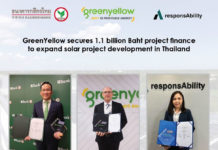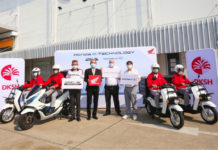Rental Yields in Bangkok remain strong
“The economy may not grow, but it won’t die either.” These were the words of Bangkok Bank executive vice-president Korbsak Phutrakul quoted in the Property Focus supplement published by the Bangkok Post in May 2014.
At the time the capital was still in the grip of a major political crisis which was ‘eroding the country’s economic health and damaging consumer and investor sentiment…’, and was seen as the ‘key risk factor for the property market for [2014].’
Then, on 22 May the military announced it had taken control of the government and they have remained in charge ever since.
While the economy as a whole remains stagnant, a company called the Global Property Guide has noted that rental yields on larger apartments in what would be classed as the more popular areas of Bangkok for foreigners have been on the rise. Those areas, specifically, are Sukhumvit Road, Silom, Sathorn, Riverside, Rama III, and Central Lumpini. These are all classified as ‘upscale residential areas’.
According to the report, published six months ago but adjusted to prices in September this year, rental yields in Bangkok range from five to 5.8 percent with smaller apartments earning higher yields than bigger apartments, although that difference is now ‘very much smaller.’
When it comes to the actual purchase prices involved for an investor, the following figures are quoted in US dollars, but with the Thai baht figures in brackets (and at a rate of 35 baht to one US dollar).
A 40-square-metre Bangkok apartment in the aforementioned upscale areas is currently priced around US$115,700 (4.05 million baht). That apartment should be able to be rented out for the equivalent of US$614 (21,500 baht) per month, thereby giving a yield of 6.3 percent, in US dollar terms.
At the top end of the scale, a 250-square-metre apartment costs around US$743,000 (26 million baht) to buy and offers a return of about US$3,000 (105,000 baht) in rental returns. That’s a yield of just 4.84 percent.
Basically, unless there was a good long-term reason to buy and lease out a large apartment in Bangkok, overseas investors would be better served purchasing five or six smaller apartments, especially if they’re looking for a stronger percentage return on investment.
The Global Property Guide considers Bangkok as a ‘moderate’ on the Long Term Investment Rating, coming in with an average 5.13 percent yield. Sydney, Australia rates a ‘poor’ 4.39 percent as does Kuala Lumpur, while Singapore, at just 2.83 percent rental return on investment, is classified as ‘very poor’.
From the standpoint of potential investment from Europeans, Copenhagen (4.84 percent), Prague (4.18 percent), Moscow (3.22 percent), Rome (3.86 percent), Berlin (3.34 percent), Paris (2.89 percent), and Vienna (2.18 percent) are rated from ‘poor’ to ‘very poor’ as long-term investments for rentals. London also rates a ‘very poor’ at just 3.21 percent.
With the looming start of the Asean Economic Community (AEC), those regional capitals likely to pose future competition to Bangkok in the investment rental stakes include Jakarta (showing 7.05 percent yield, although with high rental income tax and transaction costs) and Metro Manila (7.51 percent on average but taxes are high. On the positive side, as with Bangkok there is a strong expat rental market and yields are high in luxury accommodation).
As the Global Property Guide notes, among the advantages to buying property in Bangkok is the high yield and what they term a ‘pro-landlord rental market’ while ‘unusually low prices offer buying opportunity’.
That Bangkok will remain a relatively good deal for those looking to invest for income is almost guaranteed.










